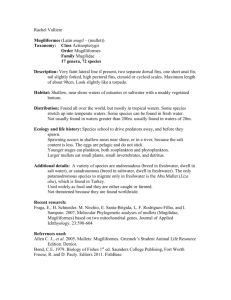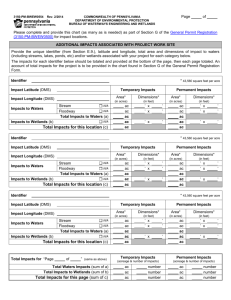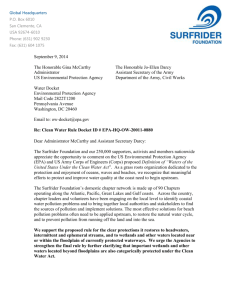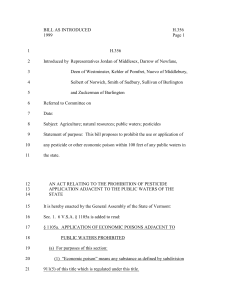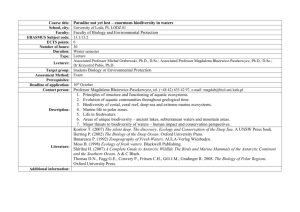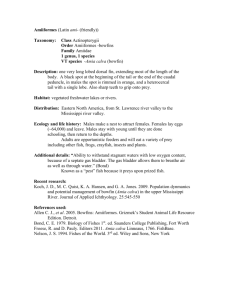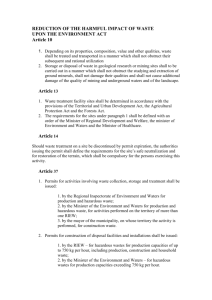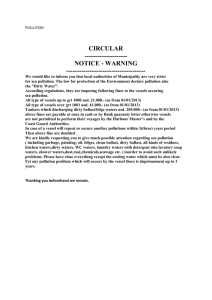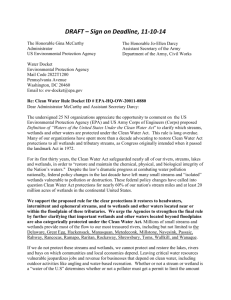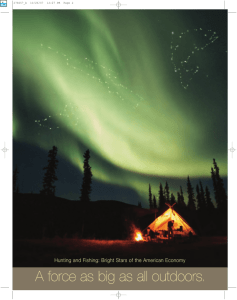Sportsmen SfR EPW-T&I hearing 2.4.15
advertisement
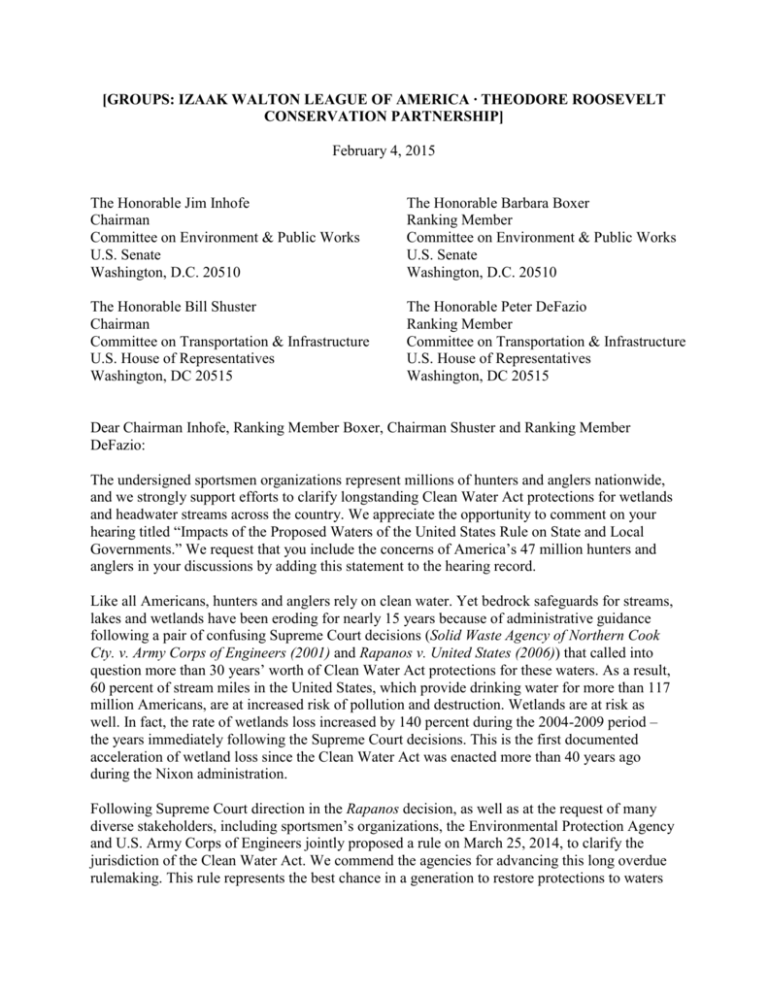
[GROUPS: IZAAK WALTON LEAGUE OF AMERICA ∙ THEODORE ROOSEVELT CONSERVATION PARTNERSHIP] February 4, 2015 The Honorable Jim Inhofe Chairman Committee on Environment & Public Works U.S. Senate Washington, D.C. 20510 The Honorable Barbara Boxer Ranking Member Committee on Environment & Public Works U.S. Senate Washington, D.C. 20510 The Honorable Bill Shuster Chairman Committee on Transportation & Infrastructure U.S. House of Representatives Washington, DC 20515 The Honorable Peter DeFazio Ranking Member Committee on Transportation & Infrastructure U.S. House of Representatives Washington, DC 20515 Dear Chairman Inhofe, Ranking Member Boxer, Chairman Shuster and Ranking Member DeFazio: The undersigned sportsmen organizations represent millions of hunters and anglers nationwide, and we strongly support efforts to clarify longstanding Clean Water Act protections for wetlands and headwater streams across the country. We appreciate the opportunity to comment on your hearing titled “Impacts of the Proposed Waters of the United States Rule on State and Local Governments.” We request that you include the concerns of America’s 47 million hunters and anglers in your discussions by adding this statement to the hearing record. Like all Americans, hunters and anglers rely on clean water. Yet bedrock safeguards for streams, lakes and wetlands have been eroding for nearly 15 years because of administrative guidance following a pair of confusing Supreme Court decisions (Solid Waste Agency of Northern Cook Cty. v. Army Corps of Engineers (2001) and Rapanos v. United States (2006)) that called into question more than 30 years’ worth of Clean Water Act protections for these waters. As a result, 60 percent of stream miles in the United States, which provide drinking water for more than 117 million Americans, are at increased risk of pollution and destruction. Wetlands are at risk as well. In fact, the rate of wetlands loss increased by 140 percent during the 2004-2009 period – the years immediately following the Supreme Court decisions. This is the first documented acceleration of wetland loss since the Clean Water Act was enacted more than 40 years ago during the Nixon administration. Following Supreme Court direction in the Rapanos decision, as well as at the request of many diverse stakeholders, including sportsmen’s organizations, the Environmental Protection Agency and U.S. Army Corps of Engineers jointly proposed a rule on March 25, 2014, to clarify the jurisdiction of the Clean Water Act. We commend the agencies for advancing this long overdue rulemaking. This rule represents the best chance in a generation to restore protections to waters 2 upon which hunters and anglers rely while preserving – and, in some cases, enhancing – longstanding Clean Water Act exemptions for farmers, ranchers and foresters that encourage wise stewardship of land and water resources. Sportsmen have been requesting a rulemaking to resolve Clean Water Act confusion for years, because, simply put, clean water equals better hunting and fishing. We were particularly pleased to see the proposed rule categorically include tributaries to waters already covered by the Clean Water Act in the definition of “waters of the United States.” These tributaries include, for example, many headwater streams that provide spawning grounds for trout and salmon. Also, the proposed rule categorically includes wetlands adjacent to these tributaries, which provide critical nesting habitat for waterfowl, in the definition of “waters of the United States.” During the public comment period, many of our organizations commented on a third category of waters – so-called “other waters,” which are not categorically included in the proposed rule. Many waters of this type are important as waterfowl habitat, as well, and the scientific literature supports a more definitive inclusion of these waters than contained in the proposed rule. For example, the Prairie Pothole Region, which stretches from Iowa through the Dakotas and into Canada, contains thousands of small, shallow wetlands that fall into the “other waters” category. This region provides nesting habitat to as many as 70 percent of all the ducks in North America. The impacts of a final rule on the sporting communities will be dramatic and overwhelmingly positive. It will reinvigorate our outdoor pursuits that depend on quality habitat. Hunting and fishing collectively represent a $200 billion a year economy, supporting 1.5 million jobs. These economic benefits are especially pronounced in rural areas, where income generated during the hunting and fishing seasons can keep small businesses operational for an entire year. Through fees and excise taxes on sporting equipment, sportsmen also pay hundreds of millions of dollars each year for wildlife management, habitat conservation and public access. This economic engine runs on clean water. Hunting and fishing aren’t just valuable components of the local, state and national economies. They are a tradition we hope to pass on to our children. Now, when fewer children are spending time outdoors, we cannot afford to lose quality habitat and days in the field due to confusing federal laws. We urge your support for this once-in-a-generation rulemaking process so we can improve and ultimately finalize a rule that – at long last – definitively states which waters are and are not covered by the Clean Water Act. Our hunting and fishing economy and way of life depend on it. Sincerely, Izaak Walton League of America Theodore Roosevelt Conservation Partnership


